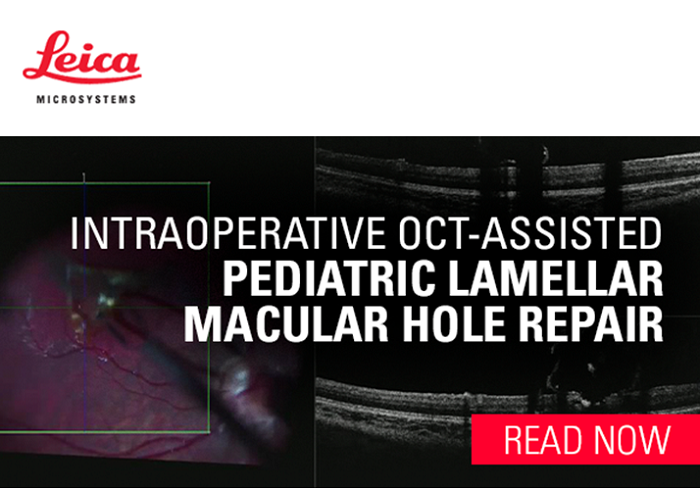Ophthalmology and OMPs
How can intraoperative OCT enhance your confidence during challenging cases?
How can intraoperative OCT enhance your confidence during challenging cases?

Vitrectomy is the most common treatment for vitreoretinal interface diseases, with success rate of over 90%.
However, in some chronic epiretinal membranes, the tissue thickens into an epiretinal proliferation that displaces foveal tissue, forming a lamellar macular hole. Lamellar macular hole repair has guarded visual expectations compared to treatment of epiretinal membranes and macular holes.
Find out how Robert A. Sisk, MD, FACS, FASRS used intraoperative OCT during a pediatric lamellar macular hole repair.
Learn how Dr. Sisk approached this case.
Dr. Sisk is Associate Professor of Ophthalmology at the University of Cincinnati. He is a vitreoretinal surgeon and partner at Cincinnati Eye Institute and serves as Director of Pediatric Retinal Surgery and Director of Ophthalmic Genetics at Cincinnati Children’s Hospital.
Key Learnings:
• Learn about the surgical management of a 9-year-old boy with epiretinal membrane in both eyes
• See the surgical approach and outcome of the operation, from removing the epiretinal membrane to using an ILM flap to close the lamellar macular hole
• Understand the role of intraoperative OCT and how it provides valuable real-time information and insights to avoid dislodging the ILM flap























